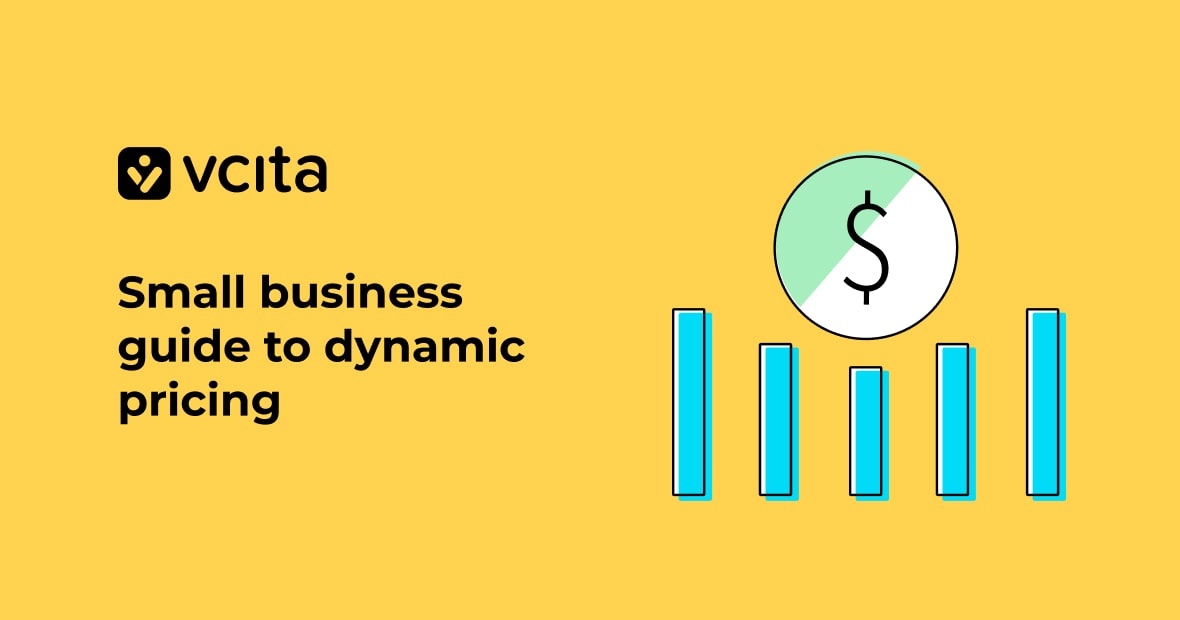You may have heard talk of “dynamic pricing” lately and wondered what it’s all about. Simply put, it’s a useful way for small business owners to improve their profits. You need to know the basic pricing strategy so you can decide if implementing dynamic pricing for your product or service makes sense.
We’ll break down what is dynamic pricing, how it works, and the benefits of variable pricing based on factors like supply and demand. By the end, you’ll understand if this strategy can help maximize your profits or if you’re better off sticking with fixed pricing.
What is dynamic pricing?
Dynamic pricing, also known as surge pricing or demand pricing, is a pricing strategy where businesses adjust prices based on market factors in real time. Instead of having fixed prices, companies vary their pricing based on supply and demand. The goal is to maximize revenue and profits.
With dynamic pricing, you’ll use algorithms and software to analyze factors like:
- Competitors’ pricing
- Seasonality and events
- Supply and demand
- Customer buying behaviors
Your system then automatically adjusts prices up or down for a product or service, to match the current market conditions. For example, rideshares might raise their prices on New Year’s Eve, when demand is very high but supply is low.
How Does Dynamic Pricing Work?
Basically, businesses that use dynamic pricing adjust prices for the same product or service at different times. It involves:
- Monitoring market factors like demand, supply, seasonality, events, and competitors’ pricing, to determine the optimal price for your product or service at any given time.
- Using dynamic pricing algorithms and software to consider factors like inventory levels, time of year, day of the week, and even the weather, and automatically adjust prices. Some platforms allow businesses to set their own pricing rules and parameters for the algorithm to follow.
- Changing prices frequently, as often as multiple times a day or week, according to fluctuations in the market and demand, raising prices during peak demand periods and lowering them when demand is down
- Applying price discrimination to charge different customers different prices for the same product or service. For example, lower prices to price-sensitive customers and higher prices to customers with more willingness to pay.
Benefits of Using Dynamic Pricing
A dynamic pricing strategy gives businesses the flexibility to raise or lower prices as needed, which brings a number of benefits for your small business.
Increased revenues
With dynamic pricing, you can charge higher prices when demand is high. This allows you to take advantage of peak periods and surge pricing to maximize sales. When demand falls, you can continue to attract customers and income by dropping your prices, so you can meet your profit goals no matter what the market is doing. Some companies have increased revenues by up to 30% using dynamic pricing.
Improved competitive edge
In today’s market, customers have more choices and access to real-time price comparisons. Dynamic pricing allows you to make quick price changes to match or beat your competitors. This can help you win new customers and keep existing ones from switching to competitors. What’s more, dynamic pricing solutions gather important data and deliver insights that help you make better pricing choices and improve your overall business decisions.
Optimized inventory levels
Dynamic pricing gives you a powerful tool to manage inventory and reduce waste. By adjusting prices based on demand and availability, you can sell surplus products or services before they expire or go out of season. This allows you to optimize your supply chain and keep just the right amount of inventory on hand.
Improved customer satisfaction
Although counterintuitive, dynamic pricing can actually increase customer satisfaction. When you charge higher prices during peak demand, customers expect to pay more and tend to value the product or service higher. Also, by using demand-based pricing, you ensure that products or services are available when customers want them. Both of these factors lead to a better overall customer experience.
Implementing dynamic pricing: a step-by-step guide
Once you understand the basics of dynamic pricing, it’s time to implement this pricing strategy for your small service business. Here are the key steps to put dynamic pricing in place.
- Collect and analyze data
First, gather information about your customers, competitors, and the market, and track your sales data, customer demographics, and competitors’ pricing over time. You need to analyze how demand fluctuates based on seasons, events, and other factors to look for patterns to determine optimal price points. The more data you have, the more accurate your dynamic pricing model will be.
- Build a pricing model
Use the data to develop algorithms that will automatically adjust your prices based on variables like demand, time of year, and competitors’ rates. The algorithms should consider your business goals, like maximizing profits or gaining market share, and follow rules such as not decreasing prices below a certain point. The model can start simple, then become more complex as you gather more data.
- Choose a pricing method
The two most common dynamic pricing methods are variable pricing, where you frequently adjust prices, and surge pricing, where you temporarily raise prices during peak demand. For a small service business, variable pricing often works well, like adjusting rates weekly or monthly Surge pricing can be used for special events when demand spikes. Whichever method you choose, clearly communicate the reasons for price changes to your customers.
- Continuously optimize
Monitor how your dynamic pricing model is working and make tweaks to improve it over time. You want to make sure your pricing strategy aligns with your brand and business goals. Track factors like how demand and profits change in response to price adjustments, and survey customers to see how they react to the varying rates. Update your algorithms and rules based on the latest data to keep optimizing your dynamic pricing approach.
With an effective dynamic pricing model in place, you can strategically set prices for your product or service based on factors like supply, demand, seasons, and competitors’ rates. This benefits your small business by maximizing revenue and keeping you competitive in an ever-changing market.
Dynamic pricing can bring success to your small business
Implementing a dynamic pricing strategy based on factors like demand, inventory, and competitors’ pricing allows you to maximize profits by charging higher prices when customers are willing to pay more. While fixed pricing is simpler, dynamic pricing helps you capture more revenue and quickly respond to changes in supply and demand. Dynamic pricing may take some getting used to, but when done right, it can be an effective pricing strategy for maximizing profits and better serving your customers.




























